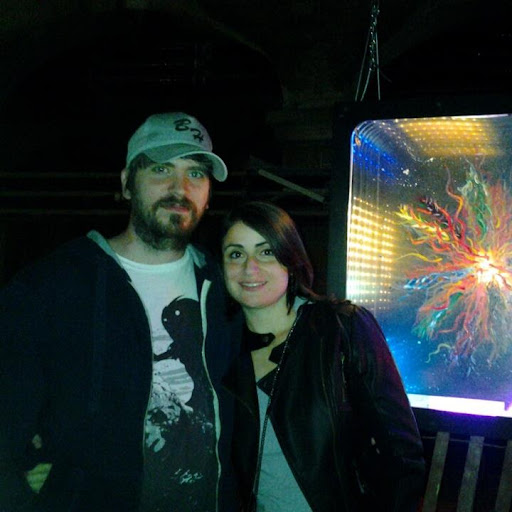Terry A Phillips
age ~63
from Conowingo, MD
- Also known as:
-
- Terry G Phillips
- Terry Gene Phillips
- Terry B Phillips
- Terry Philups
- Phone and address:
- 192 Dutch Dr, Conowingo, MD 21918
Terry Phillips Phones & Addresses
- 192 Dutch Dr, Conowingo, MD 21918
- Castle Hayne, NC
- Port Deposit, MD
- Frankford, DE
- Glen Burnie, MD
- Colora, MD
Work
-
Company:Con-way freight1998
-
Position:Driver service rep/dock worker
Education
-
School / High School:Soldan High School1979
-
Specialities:High School Diploma in General Education
Specialities
Property Management
Lawyers & Attorneys

Terry Phillips - Lawyer
view sourceOffice:
Phillips, Haskett & Ingwalson
Specialties:
Collection
Bankruptcy
Business Law
Contract
Wrongful Termination
Corporate
General Civil
Bankruptcy
Business Law
Contract
Wrongful Termination
Corporate
General Civil
ISLN:
910270241
Admitted:
1995
University:
Thomas Jefferson SOL, San Diego CA; Western State University(B.S., 1992; Western State University(J.D., 1994
Resumes

Terry Phillips
view sourceLocation:
United States

Terry Phillips
view sourceLocation:
United States

Terry Phillips
view sourceLocation:
United States

Terry Phillips
view sourceLocation:
United States

Terry Phillips
view sourceLocation:
United States

Retired Military Veteran
view sourceLocation:
Quakertown, Pennsylvania
Industry:
Computer Software
Work:
G4S Secure Solutions (USA) Inc. - Pennsylvania Jun 2011 - May 2012
Corporate Security
Vertis Communications Jun 2011 - May 2012
Corporate Security Officer
Quest Diagnostics Jan 2007 - Feb 2008
Lab Technician I
Securitas Security - Olympus America Headquarters Center Valley, Pennsylvania Mar 2006 - Aug 2006
Security Supervisor
Guardsmark LLC Nov 2003 - Jan 2006
Security Account Manager/Salaried Captain
Corporate Security
Vertis Communications Jun 2011 - May 2012
Corporate Security Officer
Quest Diagnostics Jan 2007 - Feb 2008
Lab Technician I
Securitas Security - Olympus America Headquarters Center Valley, Pennsylvania Mar 2006 - Aug 2006
Security Supervisor
Guardsmark LLC Nov 2003 - Jan 2006
Security Account Manager/Salaried Captain
Education:
US Army Ordnance 1998 - 1998
Hazardous Materials Certifyer, Combined Federal Regulations CFR25/29/49
Hazardous Materials Certifyer, Combined Federal Regulations CFR25/29/49
Skills:
CCTV
Military
Corporate Security
Access
First Aid
Loss Prevention
Surveillance
Access Control
Computer Hardware
Computer Repair
Computer Software
Networking
Wireless Networking
Microsoft Office
Microsoft Windows Server 2003 - 2008
Military
Corporate Security
Access
First Aid
Loss Prevention
Surveillance
Access Control
Computer Hardware
Computer Repair
Computer Software
Networking
Wireless Networking
Microsoft Office
Microsoft Windows Server 2003 - 2008

Terry Phillips
view sourceLocation:
United States

Owner, Silver Lining
view sourcePosition:
Owner at Silver Lining
Location:
United States
Industry:
Textiles
Work:
Silver Lining
Owner
Owner
Vehicle Records
-
Terry Phillips
view source -
Address:PO Box 331, Port Deposit, MD 21904
-
VIN:1D7HU18217S124480
-
Make:DODGE
-
Model:RAM PICKUP 1500
-
Year:2007
Isbn (Books And Publications)

When Objects Talk: Solving a Crime With Science
view sourceAuthor
Terry M. Phillips
ISBN #
0822506491

The Immune System: Your Body's Disease-Fighting Army
view sourceAuthor
Terry M. Phillips
ISBN #
0822528584


Winning the War Within: Understanding, Protecting, and Building Your Body's Immunity
view sourceAuthor
Terry M. Phillips
ISBN #
0878576487

Winning the War Within: Understanding, Protecting, and Building Your Body's Immunity
view sourceAuthor
Terry M. Phillips
ISBN #
0878576495



License Records
Terry J Phillips
License #:
33521 - Expired
Category:
Tow Truck Operator (Incident Management)
Expiration Date:
Jan 23, 2016
Terry J Phillips
License #:
37283 - Expired
Category:
Tow Truck Operator (Consent Tow)
Expiration Date:
Jan 4, 2017
Medicine Doctors

Terry Lee Phillips
view sourceSpecialties:
Anesthesiology
Education:
University of Pittsburgh(1976)
Name / Title
Company / Classification
Phones & Addresses
Principal
Thomas E Phillips
Business Services at Non-Commercial Site
Business Services at Non-Commercial Site
26216 Cv Dr, Millsboro, DE 19966
Principal
Montana Dept of Justice
Legal Counsel/Prosecution · Legal Services · Crime Control · Information System Services · Computer Operations · Indentificatin Bureau · Regulation/Administrative Transportation · Records & Driver Control Services
Legal Counsel/Prosecution · Legal Services · Crime Control · Information System Services · Computer Operations · Indentificatin Bureau · Regulation/Administrative Transportation · Records & Driver Control Services
4067774388, 4064443604, 4064442947, 4064443651
General Manager
Century Seals, Inc.
Glass, Ceramics & Concrete · Mfg Electrical Equipment/Supplies
Glass, Ceramics & Concrete · Mfg Electrical Equipment/Supplies
503 Harrington St, Seaford, DE 19973
PO Box 720, Seaford, DE 19973
3026290324
PO Box 720, Seaford, DE 19973
3026290324
FIRST CAPITAL RENTALS LLC
4 B AND B LLC
MEDEVEN TECHNOLOGIES, LTD
ACI-HOWARD KNAUF SCHOLARSHIP FOUNDATION, INC
ABUNDANT LIFE MISSIONS INTERNATIONAL
Us Patents
-
Embeddable Corrosion Rate Meters For Remote Monitoring Of Structures Susceptible To Corrosion
view source -
US Patent:7148706, Dec 12, 2006
-
Filed:Jul 18, 2003
-
Appl. No.:10/517364
-
Inventors:Rengaswamy Srinivasan - Ellicott City MD, US
Hassan M. Saffarian - Silver Spring MD, US
Terry E. Phillips - Ellicott City MD, US -
Assignee:Johns Hopkins University - Baltimore MD
-
International Classification:G01R 27/08
-
US Classification:324700, 324693
-
Abstract:An embeddable corrosion rate meter (ECRM) for detecting and measuring corrosion in metal and concrete structures is provided. The system comprises an electrochemical cell with at least one working electrode evenly separated from a counter electrode, wherein a separation distance between electrodes determines an electrolyte medium resistance and the electrolyte medium resistance is less than or equal to a polarization resistance. The system further includes a signal generator connected to a plurality of resistances for creating a plurality of current amplitudes for generating a current source; a first selector for applying a current through each of the plurality of resistances to the working electrode and counter electrode; a second selector for selecting a duration of a current pulse; a voltmeter/A-D converter having an input impedance >10ohms for measuring polarization of the working electrode; and an external reader-head with a data link and power link connected to a computing device for powering the system and collecting corrosion measurements data.
-
Battery Health Monitor
view source -
US Patent:7554294, Jun 30, 2009
-
Filed:Jan 28, 2005
-
Appl. No.:11/045740
-
Inventors:Rengaswamy Srinivasan - Ellicott City MD, US
Hassan M. Saffarian - Silver Spring MD, US
Terry E. Phillips - Ellicott City MD, US
Paul R. Zarriello - Catonsville MD, US
Bliss G. Carkhuff - Laurel MD, US
Subhas Chalasani - Troy MI, US -
Assignee:The Johns Hopkins University - Baltimore MD
-
International Classification:H02J 7/00
G01N 27/416 -
US Classification:320132, 320128, 320136, 320145, 324426
-
Abstract:A battery health monitor (BHM) that operates as a battery-mountable full-spectrum alternating current (ac) impedance meter that facilitates monitoring a state-of-charge and a state-of-health of a battery. The BHM is used for monitoring one or more electrical parameters, e. g. , impedance, of a battery. The BHM includes: a current sink coupled to the first terminal and configured to sink therefrom an oscillatory current so as to cause the battery to produce at a first terminal thereof an oscillatory voltage equal to or less than a dc operating voltage of the battery that would be present at the first terminal in the absence of the oscillatory current; and a voltage sensor configured to sense the oscillatory voltage at the first terminal.
-
Ph Sensor System And Method For Using Same
view source -
US Patent:20030211011, Nov 13, 2003
-
Filed:Dec 4, 2002
-
Appl. No.:10/311169
-
Inventors:Terry Phillips - Ellicott City MD, US
Rengaswamy Srinivasan - Ellicott City MD, US
C. Bargeron - Columbia MD, US
Hassan Saffarian - Silver Spring MD, US
Elizabeth Schemm - Clarksville MD, US -
International Classification:G01N021/27
-
US Classification:422/082050, 436/163000
-
Abstract:A pH sensor system () and method capable of monitoring the pH level of a medium based on the characteristics of a chromatic pH sensitive material employed in the pH sensor system is provided. The pH sensor system includes at least a housing () having at least one transparent surface (); a light sensitive circuitry (), e.g., a LED () and photo-detector (), enclosed within the housing; and, a chromatic pH sensitive material () overlaying at least a portion of the transparent surface having the characteristic of becoming saturated when an ambient pH level reaches a predetermined level such that the light sensitive circuitry detects a different intensity of incident light when the chromatic pH sensitive material is saturated than when the chromatic pH sensitive material is not saturated. As the pH level of the medium, e.g., concrete, storage tanks containing chemical reagents, etc., to be monitored steadily decreases, the pH sensitive material on the transparent surface of the housing will gradually become saturated with hydrogen ions and colorless. When the pH level reaches the predetermined level, the pH sensitive material will be unable to absorb any light being emitted from the LED such that the light is reflected back to the photo-detector.
-
Custom-Shape Wireless Dog Fence System And Method
view source -
US Patent:20110298615, Dec 8, 2011
-
Filed:May 18, 2011
-
Appl. No.:13/067248
-
Inventors:Christopher T. Rich - Leola PA, US
Christopher Kamery - Buffalo NY, US
Marko Lubic - Shillington PA, US
Wade Patterson - Huntsville AL, US
Steve Conrad - Huntsville AL, US
Jason S. Gurley - Madison AL, US
Terry G. Phillips - Meridianville AL, US -
International Classification:G08B 1/08
A01K 27/00
A01K 15/04 -
US Classification:34053913, 119721, 119859
-
Abstract:A custom-shaped wireless fence system is provided that contains one or more dogs in a user-defined containment area without the need for a physical fence or underground wire. The system, which is easy to set up and use, includes at least three base units and at least one collar and, preferably, a remote controller. A virtual fence is defined around the containment area, as well as around optional exclusion zones within the containment area, during system set up through communication between the base units and a trackable device as the user walks around the desired border. Visualization software enables the user to verify that the location of the fence is as desired and that the system is operating properly using a computing device having a display screen. In use, the system employs improved filtering of consecutive distance measurement values taken between the base units and the collar to discount errant measurement values in terms of their contribution to the current calculation of the dog's location. These filtering techniques, in combination with improved signal strength and antenna diversity in the communication between the base units and the collar, improve the accuracy and consistency with which the dog's location within a containment area is tracked so that unwanted corrections are not administered to the dog.
-
Battery Phase Meter To Determine Internal Temperatures Of Lithium-Ion Rechargeable Cells Under Charge And Discharge
view source -
US Patent:20120155507, Jun 21, 2012
-
Filed:Oct 18, 2011
-
Appl. No.:13/275664
-
Inventors:Rengaswamy Srinivasan - Ellicott City MD, US
Michael H. Butler - Dayton MD, US
Bliss G. Carkhuff - Laurel MD, US
Terry E. Phillips - Ellicott City MD, US
Jeremy D. Walker - Washington DC, US
Oscar M. Uy - Baltimore MD, US
Andrew C. Baisden - Silver Spring MD, US -
Assignee:JOHNS HOPKINS UNIVERSITY - Baltimore MD
-
International Classification:G01N 25/00
-
US Classification:374 45
-
Abstract:Methods and systems to determine an internal temperature of a rechargeable lithium-ion cell based on a phase shift of the cell. Internal cell temperature may be determined with respect to an internal anode temperature and/or an internal cathode temperature. Internal anode temperature may be determined based on a phase shift of a frequency within a range of approximately 40 Hertz (Hz) to 500 Hz. Internal cathode temperature may be determined based on a phase shift of a frequency of up to approximately 30 Hz. A temperature sensor as disclosed herein may be powered by a monitored cell with relatively little impact on cell charge, may be electrically coupled to cell but housed physically separate from the cell, and/or may monitor multiple cells in a multiplex fashion. A rate of change in phase shift may be used to initiate pre-emptive action, without determining corresponding temperatures.
-
Time-Temperature Indicator
view source -
US Patent:20120236901, Sep 20, 2012
-
Filed:Mar 14, 2012
-
Appl. No.:13/419809
-
Inventors:John A. Thomas - Ellicott City MD, US
Jason E. Tiffany - Columbia MD, US
Lawrence W. Hunter - Ellicott City MD, US
Terry E. Phillips - Ellicott City MD, US -
Assignee:THE JOHNS HOPKINS UNIVERSITY - Baltimore MD
-
International Classification:G01K 3/04
-
US Classification:374102, 374E03004
-
Abstract:A time-temperature indication device includes a first reservoir having a fluid disposed therein, and a capillary tube. The capillary tube is disposed proximate to the first reservoir to receive fluid from the first reservoir responsive to changes in viscosity of the fluid based on changes in temperature. The capillary tube restricts flow of the fluid out of the first reservoir into the capillary tube to enable fluid flow only in a single direction.
-
Method For Detection Of Weak Links In The Current Path Of Electrically Continuous Superconductors
view source -
US Patent:49049291, Feb 27, 1990
-
Filed:Mar 20, 1989
-
Appl. No.:7/325823
-
Inventors:Joseph Bohandy - Columbia MD
Boris F. Kim - Pasadena MD
Terry E. Phillips - Ellicott City MD
Frank J. Adrian - Olney MD
Kishin Moorjani - Silver Spring MD -
Assignee:The Johns Hopkins University - Baltimore MD
-
International Classification:G01N 2700
-
US Classification:324 716
-
Abstract:Weak links in electrically continuous superconductors are detected by observing the effect of magnetic field modulation on the dc resistance of superconductors. The phase detected response to the magnetic modulation shows a peak at T. sub. c. The presence of a second peak at temperatures below T. sub. c, and concomitantly the appearance of a tail on the low temperature end of the dc resistance vs temperature curve indicates the presence of weak links in the superconductor.
-
Microwave Method For Detection Of Weak Links In Superconductors
view source -
US Patent:50598910, Oct 22, 1991
-
Filed:Dec 28, 1989
-
Appl. No.:7/458066
-
Inventors:Joseph Bohandy - Columbia MD
Boris F. Kim - Pasadena MD
Terry E. Phillips - Ellicott City MD
Frank J. Adrian - Olney MD
Kishin Moorjani - Silver Spring MD -
Assignee:The Johns Hopkins University - Baltimore MD
-
International Classification:G01N 2714
G01R 2704 -
US Classification:324 716
-
Abstract:Weak links in superconductors are detected by observing the effect of magnetic field modulation on the microwave resistance of superconductors. The phase detected response to the magnetic modulation can show a peak at T. sub. c. The presence of peak(s) at temperatures below T. sub. c indicates the presence of weak links in the superconductor.

Terry Bechler Phillips
view source
Terry McQueen Phillips
view source
Terry Jeanne Phillips
view source
Terry Carmack Phillips
view source
Terry Miller Phillips
view source
Terry Phillips Jr
view source
Terry Highlyblest Phillips
view source
Terry Phillips DeLg
view sourceGoogleplus

Terry Phillips
Lived:
Elkridge, Maryland
Alexandria, Louisiana
Shreveport, Louisiana
Houston, Texas
San Diego, California
Honolulu, Hawaii
Alexandria, Louisiana
Shreveport, Louisiana
Houston, Texas
San Diego, California
Honolulu, Hawaii
Work:
U.S. Navy
Education:
Huddle Elementary, Alexandria Junior High, Fort Hays State University

Terry Phillips
Work:
NextCrew - Senior Software Developer
Education:
Regis University - Computer Science
Tagline:
Senior Software Developer at nextcrew.com

Terry Phillips
Work:
Delicious Monster Software (2)
Education:
University of Washington - BS in Technical Communication

Terry Phillips (Drifter F...
Work:
FREEWHEELERS MC

Terry Phillips
Work:
GEICO (2010)

Terry Phillips
Work:
Terry Phillips For Congress

Terry Phillips
Education:
Western Michigan University

Terry Phillips
About:
I am the General Manager of P&A Industrial Fabrications LLC in Roxboro, NC
Bragging Rights:
Clemson Grad, 2 great kids and 3 even greater grand kids and the best wife in the world!
Flickr
Plaxo

Terry Phillips
view sourceRotary International Past: Chair, RI Rotaract Committee at Rotary International

Terry Phillips
view sourceSingapore

Terry Phillips
view sourceMidland, TexasHilliard Energy, Ltd.
Vice President Marketing
& External Affairs
Myspace
Classmates

Terry Duffy (Phillips)
view sourceSchools:
Lexington High School Lexington NE 1974-1978
Community:
Linda Mead, Curtis Callahan, Kim Carr, Ellerine Brown, Chris Wiley, Leann Millican, Todd Wade, Rhonda Malcom, Rick Johnson, Helen Linden, Arelda Hagan

Terry Phillips
view sourceSchools:
West Lauderdale High School Collinsville MS 1976-1980
Community:
Brian Reid, Terry Rice

Terry Phillips (Jones)
view sourceSchools:
Carrollton High School Carrollton GA 1969-1973
Community:
Dennis Sullivan, Mary Krebs

Terry Phillips (Simmons)
view sourceSchools:
Gordon Military High School Barnesville GA 1966-1970
Community:
Sue Conger, Rhonda Toon, Melinda Dennis

Terry Phillips
view sourceSchools:
Johnson High School Gainesville GA 1968-1972
Community:
Ernie Hall, Michele Hughes

Terry Phillips
view sourceSchools:
Pepperell High School Lindale GA 1968-1975, Franklin County High School Carnesville GA 1970-1986

Terry Phillips
view sourceSchools:
Northwest Whitfield High School Tunnel Hill GA 1981-1985

Terry Phillips (Platt)
view sourceSchools:
Pennville High School Pennville IN 1963-1967
Community:
Connie Anders, Sadonna Pryor, Neal Bouse
Youtube
News

Four out of 9 Colorado Electoral College members agree: Revolt is necessary
view source- Nemanich, a high school math teacher from Colorado Springs, Jerad Sutton of Greeley, also a math teacher, and Micheal Baca, a 24-year-old grad student who is not related to Polly Baca. The five who were not there were Terry Phillips, Amy Drayer, Mary Beth Corsentino, Ann Knollman and Rollie Heath.
- Date: Nov 28, 2016
- Category: U.S.
- Source: Google

Standing Rock Sioux in a Standoff With Pipeline Company and Army
view source- "Rumor has it we are all out here with rifles and pipe bombs," Terry Phillips, the traffic director, said. "That's just ridiculous. The closest thing I have seen to weapons out here is this." He chuckled as he shook a Sioux coup stick, an ornamental stick decorated with feathers.
- Date: Aug 21, 2016
- Category: Business
- Source: Google

Five local veterans give up smoking
view source- The five veterans who collectively have smoked for 206 years, Burroughs, Terry Phillips, Anthony Shenault, Carl Jones, and Doug Wilson, have now collectively quit smoking for 23 months and counting, and are well on their way to better health, Sampson added.
- Date: Aug 02, 2013
- Category: Health
- Source: Google

Rising star Rubio quits Senate to be with family
view source- Terry Phillips, who ran without a party affiliation for Congress against Bakersfield Rep. Kevin McCarthy, said he expects a large number of people to join the race but, if they don't, he could consider it.
- Date: Feb 22, 2013
- Category: U.S.
- Source: Google
Get Report for Terry A Phillips from Conowingo, MD, age ~63




















